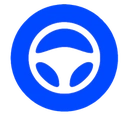 This update includes Full Self-Driving v10.69.3.2
for eligible
vehicles and
regions.
This update includes Full Self-Driving v10.69.3.2
for eligible
vehicles and
regions.
Release Notes
Full Self-Driving Beta v10.69.3.2
Upgraded the Object Detection network to photon count video streams and retrained all parameters with the latest autolabeled datasets (with a special emphasis on low visibility scenarios).
Improved the architecture for better accuracy and latency, higher recall of far away vehicles, lower velocity error of crossing vehicles by 20%, and improved VRU precision by 20%.
Converted the VRU Velocity network to a two-stage network, which reduced latency and improved crossing pedestrian velocity error by 6%.
Converted the Non VRU Attributes network to a two-stage network, which reduced latency, reduced incorrect lane assignment of crossing vehicles by 45%, and reduced incorrect parked predictions by 15%.
Reformulated the autoregressive Vector Lanes grammar to improve precision of lanes by 9.2%, recall of lanes by 18.7%, and recall of forks by 51.1%. Includes a full network update where all components were re-trained with 3.8x the amount of data.
Added a new "road markings" module to the Vector Lanes neural network which improves lane topology error at intersections by 38.9%.
Upgraded the Occupancy Network to align with road surface instead of ego for improved detection stability and improved recall at hill crest.
Reduced runtime of candidate trajectory generation by approximately 80% and improved smoothness by distilling an expensive trajectory optimization procedure into a lightweight
Improved decision making for short deadline lane changes around gores by richer modeling of the trade-off between going off-route vs trajectory required to drive through the gore region.
Reduced false slowdowns for pedestrians near crosswalk by using a better model for the kinematics of the pedestrian.
Added control for more precise object geometry as detected by general occupancy network.
Improved control for vehicles cutting out of our desired path by better modeling of their turning / lateral maneuvers thus avoiding unnatural slowdowns.
Improved longitudinal control while offsetting around static obstacles by searching over feasible vehicle motion profiles
Improved longitudinal control smoothness for in-lane vehicles during high relative velocity scenarios by also considering relative acceleration in the trajectory optimization.
Reduced best case object photon-to-control system latency by 26% through adaptive planner scheduling, restructuring of trajectory selection, and parallelizing perception compute. This allows us to make quicker decisions and improves reaction time.
Update History
The historical record of all vehicles that received this update.
| Time | Previous Version | Model | HW | Country |
|---|